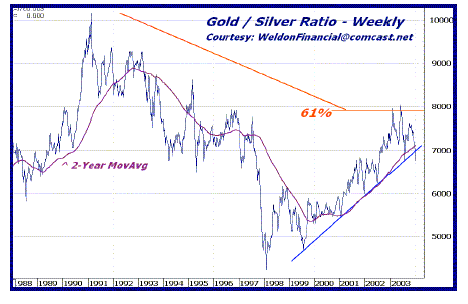The BLS reported December U.S. Import/Export prices yesterday. The numbers showed that a weaker dollar has not made U.S. exports a lot cheaper, or foreign imports a lot more expensive. They also show that it’s good time to be short-term bullish on oil, long-term bullish agricultural commodities, and ready to tear out the plumbing of the vacant tract homes in the nearest neighborhood when interest rates rise….But first…the numbers.
Export prices rose 0.2% in December, after a half a percent rise in November. And over the last twelve months, export prices are actually up 2.2%. That’s the biggest one-year gain since 1995. But when you look closer,
higher export prices don’t mean that U.S. businesses were suddenly more competitive because of a weaker dollar. In fact, one-way of looking at the marginally higher export prices is that it inflation in commodity prices, pure and simple.
Prices for feed, wheat, and soybeans were up 13.6% in the last twelve months. By contrast, non-agricultural prices were up only 1.3% in the last year. Where is the profit windfall for U.S. exporters?
On the export side of the ledger, prices for non-agricultural industrial goods and metals are rising, up 5.9% for the year on the strength of oil. Capital goods prices have fallen half a percent in the last twelve months, while consumer goods prices have actually increased 0.8%.
The textbook theory is that higher export prices mean a weaker dollar is working its soothing powers on exporters. Exporters are able to raise prices without raising costs in the local currency. Yet even on a year-over-year basis, the BLS numbers show that the only real growth in export prices (and presumably in profits) is in commodities, not manufactured goods.
On the import side of the ledger, the textbook theory is that a weaker dollar raises the price of foreign goods. Nice theory. But does it hold up?
Import prices ARE up in the last twelve months, by 1.9%.
But again, it was energy and commodity prices driving the growth--and price increases in those kinds of products do not cause consumers to choose a domestic over a foreign producer. It does not make U.S. firms any more profitable.
Petroleum prices were the single largest factor in the rise in any event, up 9.1% in the last twelve months. Non-petroleum import prices--prices for everything else--are up ony 1% in the last year. And prices for imported capital goods were actually down 0.2%.
So, the dollar can have can be competitively weak, yet it does not cause a substantial increase in the price of foreign goods. And by extension, there is NO windfall for U.S companies. By the way, where import prices WERE rising, they were rising for imports of metal, industrial supplies, and materials (up 6.7% over twelve months). Again, this just confirms that while price inflation may not be showing up in finished goods, it IS showing up in raw materials, i.e. commodities.
Why has the theory that a weaker dollar will lead to higher exports and lower imports broken down? A weaker dollar should, repeat should, cause import prices to go up. To compensate for the falling dollar, foreigners raise the prices of their goods to retain profit margins.
But that hasn’t happened at all. And that’s one part of the explanation.
Import prices haven’t risen much because foreign producers pay such cheap labor and manufacturing costs, they can afford even a smaller profit margin and don’t have to raise prices. What’s more, in Asia at least, the dollar’s fall has been matched by competitive devaluations, keeping Asian profit margins on exports to the U.S. relatively stable.
That’s not to say the dollar’s weakness hasn’t caused any pain for some foreign producers. Import prices rose on goods from Europe and Latin America. EU import prices are up 3.3% in the last twelve months. Latin American import prices are up 3.5%. But the price indexes for Japan and the newly industrialized countries in Asia show that import prices actually decreased by 0.4% over the last twelve months.
Greenspan (who, based on his recent speech, believes in a free market for everything EXCEPT interest rates) seems to have concluded that all of this is just fine. It’s a painless devaluation. While the dollar’s decline hasn’t had any discernable benefits to U.S. exports, it hasn’t really had any discernable costs either. Since there hasn’t been any rise in consumer price inflation, or in finished goods, Greenspan can look the other way, keep his foot on the monetary gas pedal by keeping rates low, and hope for a more robust recovery.
But there HAS been some inflation…namely in crude oil prices and commodities. And here, indirectly, we may finally find an event that forces the Fed to raise rates. Two, even.
First, dollar weakness IS putting a big hurt on foreign holdings of U.S. financial assets. When the currency loss on dollar-denominated financial assets becomes prohibitive to owning them, either the Fed will raise rates to strengthen the dollar, OR, foreign holders will cut their losses and get out (or at least reduce acquisitions of dollar-denominated assets.)
THAT, as patient readers know, has not happened yet. Keep in mind, though, that the weak dollar is not the only factor to consider here. Stock markets themselves will have a lot to say about the willingness of foreigners to bear the currency pain.
Even if the dollar stabilizes at around 1.25 to the euro….stock markets will still have to deliver big gains to continually offset the currency cost of owning the dollar. A month or two of poor stock market performance brings the pain home to Europe even more acutely, and could itself account for the selling of U.S stocks and bonds--with our without more belly flopping by the dollar.
But the more indirect cause of higher U.S. interest rates and a move to boost the dollar may come from higher oil prices. Oil, at least in euro terms, as NOT risen that much at all. I refer to a chart produced by my main macro man, Greg Weldon, showing that euro strength has kept crude prices from appreciating in euro terms.
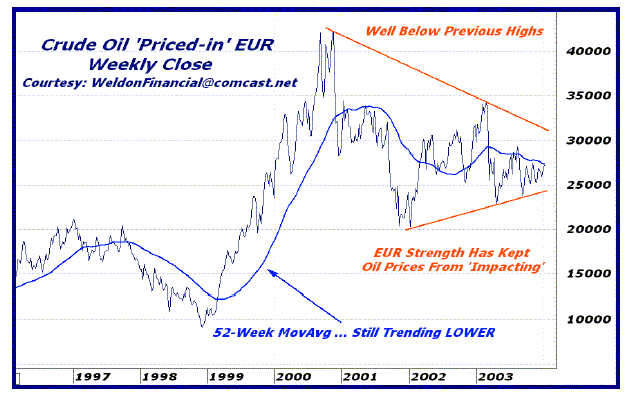
But crude is NOT priced in euros, not yet anyway. It’s priced in dollars. Dollar weakness is not leading to huge reductions in U.S. purchases of foreign goods. But it IS leading to higher energy costs for EVERYONE in the world. Dollar inflation is showing in crude oil prices.
It’s a double whack for the rest of the world. Whack one, as the dollar falls, the value of your dollar-denominated investments fall too. Whack two, as the dollar weakens, your own energy costs rise.
This recent rise in crude oil prices doesn’t have much to do with critical shortness of supplies or high winter energy demand in the northern hemisphere. True, Chinese trade figures revealed that Chinese 2003 crude oil imports were 31% higher than 2002. There IS a huge and sustainable increase in energy demand coming out of Asia for years to come. But right now, higher oil prices are a function of dollar weakness: inflation pure and simple.
And so, dollar weakness has taken a rather indirect approach toward forcing the Fed to raise rates in 2004. So indirect in fact, that the Fed will probably shrug it off. The Europeans--who are being punished with higher dollar-energy costs, may decide to do something on their own to arrest the dollar’s ascent. But for the most part, dollar weakness is, as Lord Rees-Mogg said last week, a European problem for now.
If the Fed is willing to sit on the sideline and watch crude prices and agricultural commodity prices rise without raising rates, what should investors do?
Well, since the Fed is not inclined to raise rates any sooner than it has to, and since the ECB and the rest of the world can only do so much (other than pricing oil in a basket of other currencies rather than dollars)
dollar weakness is going to keep showing up in higher oil prices AND, as the export/import price indexes showed, in higher agricultural commodity prices.
Should you be long-term oil bullish? Higher oil prices (whether it be in dollars or some other unit) ARE a function of long-term supply/demand dynamics. But oil prices are also political. Energy costs hit voters in a way that makes headlines and causes anger. And so I think
the increase in oil prices is “tradeable” event, but not something you want to bank on for the rest of the year. You can trade the oil indexes, though…OIH and the OSX come to mind for options traders.
Longer-term, you CAN invest in the growth of global demand for commodities. There are political elements to the price of some agricultural commodities. For example, cotton prices were up 19.8% in the last twelve months, on the strength of the U.S. subsidies and tariffs (or on the backs of U.S. taxpayers, if you want to know the truth).
But even without government intervention or a weaker dollar, commodity prices are going to rise on the back of growing demand. In the February issue of Strategic Investment (which I’m working on right now), I’ll tell you how to profit.
On top of the Scrap Heap
By the way, for data junkies…the category of U.S. exports that enjoyed the single highest growth in prices over the last twelve months was…drum roll please… scrap metal at 38.9% Let’s hear it for a weaker dollar boosting the competitiveness of scrap metal exporters!!
I point this out to suggest that maybe the best business you could get into right now is buying up foreclosed homes, tearing them down, salvaging the scrap metal, and selling it to China for a profit.
It IS bizarre though, isn’t it? It reminds me of a story a few years ago about a warehouse in London where new computers were being disassembled and stripped of the precious metals and scrap in them that could be sold at a profit.
This is the dynamic of “Value Subtraction” that comes at the end of capacity booms. Doesn’t matter if it it’s an IT boom, or a homebuilding boom. What happens is that the overcapacity in the production of an asset leads to value of finished asset being less than the parts. In other words, the parts are worth more than the whole.
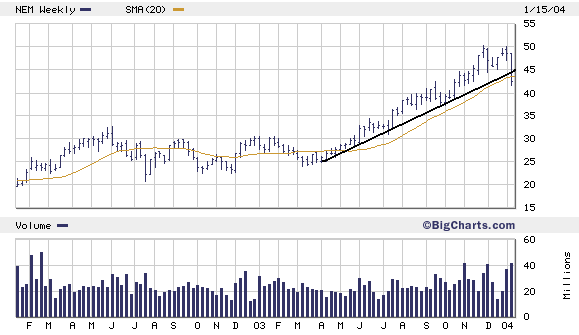
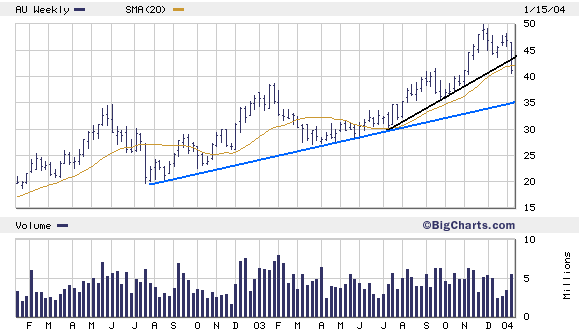
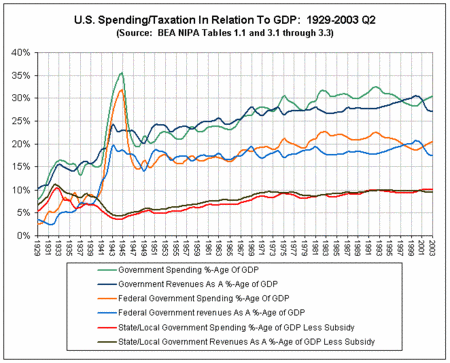
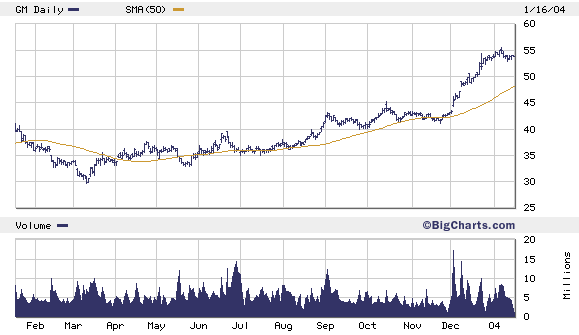
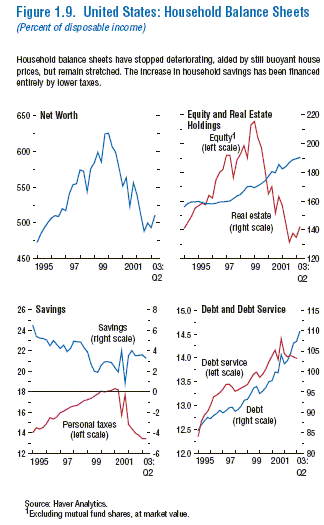
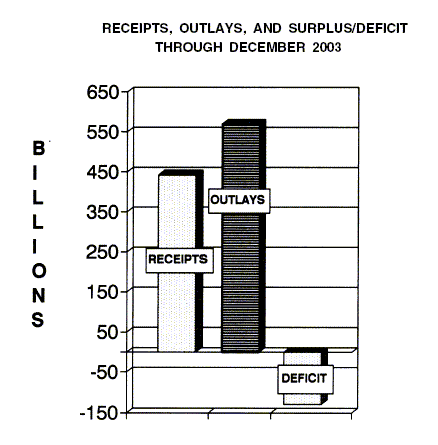
 But crude is NOT priced in euros, not yet anyway. It’s priced in dollars. Dollar weakness is not leading to huge reductions in U.S. purchases of foreign goods. But it IS leading to higher energy costs for EVERYONE in the world. Dollar inflation is showing in crude oil prices.
It’s a double whack for the rest of the world. Whack one, as the dollar falls, the value of your dollar-denominated investments fall too. Whack two, as the dollar weakens, your own energy costs rise.
This recent rise in crude oil prices doesn’t have much to do with critical shortness of supplies or high winter energy demand in the northern hemisphere. True, Chinese trade figures revealed that Chinese 2003 crude oil imports were 31% higher than 2002. There IS a huge and sustainable increase in energy demand coming out of Asia for years to come. But right now, higher oil prices are a function of dollar weakness: inflation pure and simple.
And so, dollar weakness has taken a rather indirect approach toward forcing the Fed to raise rates in 2004. So indirect in fact, that the Fed will probably shrug it off. The Europeans--who are being punished with higher dollar-energy costs, may decide to do something on their own to arrest the dollar’s ascent. But for the most part, dollar weakness is, as Lord Rees-Mogg said last week, a European problem for now.
If the Fed is willing to sit on the sideline and watch crude prices and agricultural commodity prices rise without raising rates, what should investors do?
Well, since the Fed is not inclined to raise rates any sooner than it has to, and since the ECB and the rest of the world can only do so much (other than pricing oil in a basket of other currencies rather than dollars) dollar weakness is going to keep showing up in higher oil prices AND, as the export/import price indexes showed, in higher agricultural commodity prices.
Should you be long-term oil bullish? Higher oil prices (whether it be in dollars or some other unit) ARE a function of long-term supply/demand dynamics. But oil prices are also political. Energy costs hit voters in a way that makes headlines and causes anger. And so I think the increase in oil prices is “tradeable” event, but not something you want to bank on for the rest of the year. You can trade the oil indexes, though…OIH and the OSX come to mind for options traders.
Longer-term, you CAN invest in the growth of global demand for commodities. There are political elements to the price of some agricultural commodities. For example, cotton prices were up 19.8% in the last twelve months, on the strength of the U.S. subsidies and tariffs (or on the backs of U.S. taxpayers, if you want to know the truth).
But even without government intervention or a weaker dollar, commodity prices are going to rise on the back of growing demand. In the February issue of Strategic Investment (which I’m working on right now), I’ll tell you how to profit.
On top of the Scrap Heap
By the way, for data junkies…the category of U.S. exports that enjoyed the single highest growth in prices over the last twelve months was…drum roll please… scrap metal at 38.9% Let’s hear it for a weaker dollar boosting the competitiveness of scrap metal exporters!!
I point this out to suggest that maybe the best business you could get into right now is buying up foreclosed homes, tearing them down, salvaging the scrap metal, and selling it to China for a profit.
It IS bizarre though, isn’t it? It reminds me of a story a few years ago about a warehouse in London where new computers were being disassembled and stripped of the precious metals and scrap in them that could be sold at a profit.
This is the dynamic of “Value Subtraction” that comes at the end of capacity booms. Doesn’t matter if it it’s an IT boom, or a homebuilding boom. What happens is that the overcapacity in the production of an asset leads to value of finished asset being less than the parts. In other words, the parts are worth more than the whole.
But crude is NOT priced in euros, not yet anyway. It’s priced in dollars. Dollar weakness is not leading to huge reductions in U.S. purchases of foreign goods. But it IS leading to higher energy costs for EVERYONE in the world. Dollar inflation is showing in crude oil prices.
It’s a double whack for the rest of the world. Whack one, as the dollar falls, the value of your dollar-denominated investments fall too. Whack two, as the dollar weakens, your own energy costs rise.
This recent rise in crude oil prices doesn’t have much to do with critical shortness of supplies or high winter energy demand in the northern hemisphere. True, Chinese trade figures revealed that Chinese 2003 crude oil imports were 31% higher than 2002. There IS a huge and sustainable increase in energy demand coming out of Asia for years to come. But right now, higher oil prices are a function of dollar weakness: inflation pure and simple.
And so, dollar weakness has taken a rather indirect approach toward forcing the Fed to raise rates in 2004. So indirect in fact, that the Fed will probably shrug it off. The Europeans--who are being punished with higher dollar-energy costs, may decide to do something on their own to arrest the dollar’s ascent. But for the most part, dollar weakness is, as Lord Rees-Mogg said last week, a European problem for now.
If the Fed is willing to sit on the sideline and watch crude prices and agricultural commodity prices rise without raising rates, what should investors do?
Well, since the Fed is not inclined to raise rates any sooner than it has to, and since the ECB and the rest of the world can only do so much (other than pricing oil in a basket of other currencies rather than dollars) dollar weakness is going to keep showing up in higher oil prices AND, as the export/import price indexes showed, in higher agricultural commodity prices.
Should you be long-term oil bullish? Higher oil prices (whether it be in dollars or some other unit) ARE a function of long-term supply/demand dynamics. But oil prices are also political. Energy costs hit voters in a way that makes headlines and causes anger. And so I think the increase in oil prices is “tradeable” event, but not something you want to bank on for the rest of the year. You can trade the oil indexes, though…OIH and the OSX come to mind for options traders.
Longer-term, you CAN invest in the growth of global demand for commodities. There are political elements to the price of some agricultural commodities. For example, cotton prices were up 19.8% in the last twelve months, on the strength of the U.S. subsidies and tariffs (or on the backs of U.S. taxpayers, if you want to know the truth).
But even without government intervention or a weaker dollar, commodity prices are going to rise on the back of growing demand. In the February issue of Strategic Investment (which I’m working on right now), I’ll tell you how to profit.
On top of the Scrap Heap
By the way, for data junkies…the category of U.S. exports that enjoyed the single highest growth in prices over the last twelve months was…drum roll please… scrap metal at 38.9% Let’s hear it for a weaker dollar boosting the competitiveness of scrap metal exporters!!
I point this out to suggest that maybe the best business you could get into right now is buying up foreclosed homes, tearing them down, salvaging the scrap metal, and selling it to China for a profit.
It IS bizarre though, isn’t it? It reminds me of a story a few years ago about a warehouse in London where new computers were being disassembled and stripped of the precious metals and scrap in them that could be sold at a profit.
This is the dynamic of “Value Subtraction” that comes at the end of capacity booms. Doesn’t matter if it it’s an IT boom, or a homebuilding boom. What happens is that the overcapacity in the production of an asset leads to value of finished asset being less than the parts. In other words, the parts are worth more than the whole.
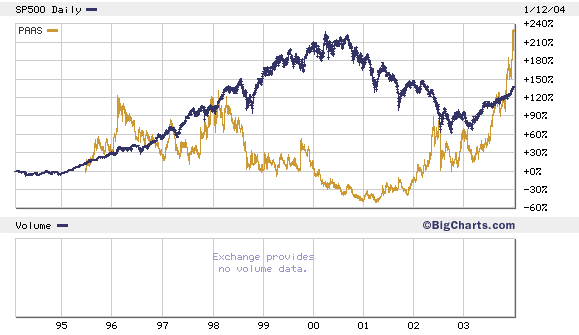
 And for a little better image quality...try this...
And for a little better image quality...try this...
